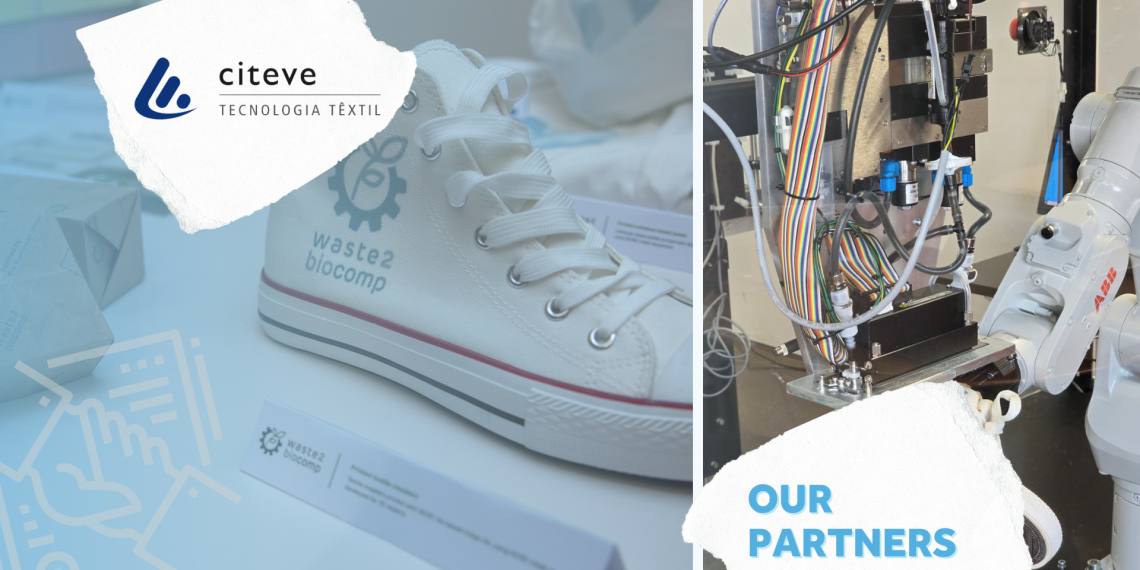Through the development and dissemination of scientific and technological knowledge, the promotion of creativity, and technical support for defining and implementing public policies, CITEVE contributes to accelerating innovation, competitiveness, and sustainability in the sector.
We spoke with Helena Vilaça, Technical Project Manager and Laboratory Manager, with whom INESC TEC recently collaborated within the scope of the Waste2BioComp project.
How did the partnership between CITEVE and INESC TEC begin?
This specific collaboration with INESC TEC began in 2021, building on a strong prior relationship across various initiatives and projects. At the time, we faced a challenge where the complementarity of our skills was crucial for project success: while CITEVE brought in-depth knowledge and experience in the textile and clothing sector, INESC TEC contributed with an extensive expertise in advanced technologies such as software development, robotics, Artificial Intelligence (AI), and automation. This marked the start of our collaboration within the scope of the Waste2BioComp project.
The partnership is ongoing, and we are now involved in several R&D projects at both European and national levels, such as be@t, tExtended, and TEXP@CT. In these projects, collaboration with INESC TEC has enabled the exploration of automation systems for these sectors, including a robotic solution for sustainable 3D printing of textile products, autonomous robotic sorting mechanisms for textile recycling, and the development of platforms to enhance data visibility and traceability across the value chain.
In the recent European Waste2BioComp project, what were the main results achieved?
The Waste2BioComp project – which concluded in May this year after three years of work with a consortium of 13 partners – achieved very positive results.
INESC TEC’s contribution was crucial in developing an autonomous system for 3D printing of footwear, both textile-based and leather-based. This innovative system allows personalised three-dimensional printing of products using sustainable inks. These inks, water-based and containing biological pigments, have the advantage of being removable, enabling textile-based products to be reprinted.
How does this project contribute to sustainability and innovation in the textile and footwear sectors?
Waste2BioComp is an excellent example of how technological innovation can drive sustainability. The autonomous footwear printing solution (the product selected for the project) using sustainable inks allows customers to personalise products in-store, avoiding the production of unsold items that would otherwise sometimes end up in landfills.
Furthermore, the ability to remove and reapply colours increases the longevity of the footwear, reducing the need to produce new pairs. The innovation lies precisely in providing a flexible and customisable solution, making the production process more efficient and aligned with circular economy principles.
What do you value most in this collaboration with INESC TEC?
We greatly value the complementarity of skills that the partnership provides. INESC TEC brought deep technical knowledge and a comprehensive research methodology, essential for developing the printing system. Meanwhile, CITEVE contributed with market insight, real industry needs, and expertise in ink development. In addition, the synergy and openness between teams were crucial. Smooth communication and continuous collaboration allowed us to achieve results that would have been very difficult to obtain independently.
What can we expect from this partnership in the coming years?
Ongoing collaboration with INESC TEC is important for addressing challenges in critical areas for the textile and clothing sectors, with several projects already underway. We will continue to jointly explore automation, AI, and robotics solutions to optimise production and recycling processes, which are fundamental for a more sustainable and competitive textile and clothing sector.
CITEVE aims to continue leading innovation and driving the digital and sustainable transition of the textile sector in Portugal and Europe. We believe that combining our expertise with that of INESC TEC will allow us to face future challenges in a more robust and effective way.



 News, current topics, curiosities and so much more about INESC TEC and its community!
News, current topics, curiosities and so much more about INESC TEC and its community!